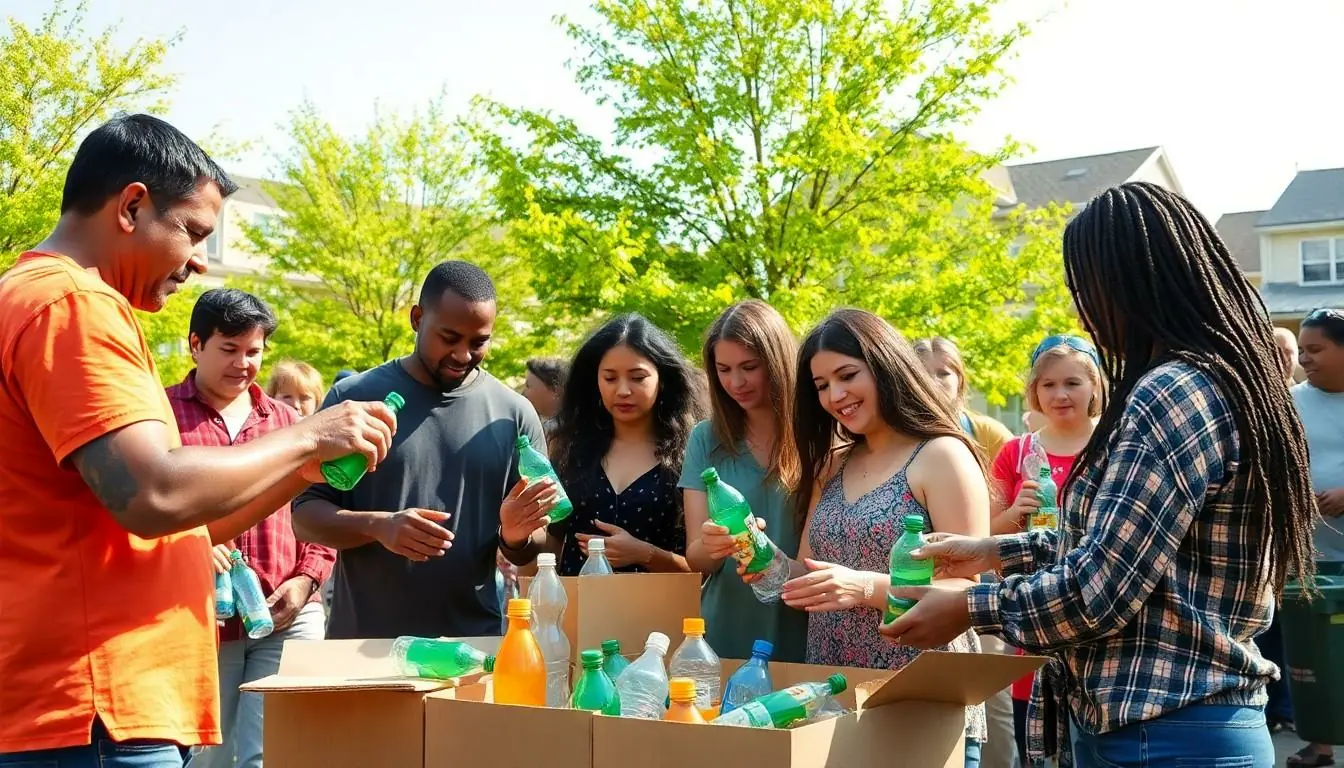In a world drowning in waste, wildcat recycling emerges as the eco-friendly hero we didn’t know we needed. Picture this: a group of savvy individuals turning trash into treasure, all while dodging the bureaucratic red tape of traditional recycling programs. They’re like the Robin Hoods of recycling, taking what others discard and giving it a second life.
Table of Contents
ToggleOverview of Wildcat Recycling
Wildcat recycling represents an innovative approach to waste management. This method involves individuals who creatively repurpose discarded materials, often overlooked by formal recycling channels. The practice not only reduces waste but transforms it into valuable resources.
These recyclers operate beyond typical restrictions, demonstrating ingenuity while contributing to sustainability. They often focus on items such as plastics, metals, and textiles, which might otherwise end up in landfills. By creatively reimagining these materials, they generate new products, from furniture made of reclaimed wood to fashion items crafted from repurposed textiles.
Communities benefit from wildcat recycling as it promotes local economies. Small businesses frequently emerge from these initiatives, allowing individuals to sell their repurposed creations. This trend encourages collaboration among community members, fostering a shared sense of responsibility toward the environment.
Environmental impacts of wildcat recycling are notable. It reduces carbon footprints by minimizing the energy required for manufacturing new products. Landfill diversion results as well, relieving pressure on waste management systems. Studies indicate that localized recycling efforts can significantly lower waste production, making this approach vital to addressing waste issues.
Legislation and organized efforts frequently struggle to adapt to the dynamic and creative nature of wildcat recycling. Communities that embrace this method illustrate how grassroots movements can drive sustainable practices. As more individuals engage in these activities, the potential for large-scale change within recycling frameworks increases.
Environmental Impact

Wildcat recycling significantly influences the environment by promoting sustainable practices and reducing waste in innovative ways.
Benefits of Wildcat Recycling
Wildcat recycling lowers carbon footprints as repurposed materials reduce the need for new resources. Transforming waste into new products minimizes landfill contributions, preventing harmful emissions. Innovative individuals often create small businesses, which boost local economies while fostering community engagement. Resources that might otherwise be discarded become valuable goods, contributing to a circular economy. Positive environmental impacts also include conserving natural resources and reducing the production of new materials. Localized efforts in wildcat recycling help encourage sustainable habits within communities, amplifying the reach of eco-conscious initiatives.
Challenges and Concerns
Wildcat recycling faces several hurdles that can hinder its effectiveness. Lack of regulation creates challenges regarding safety and quality control for products made from recycled materials. Variability in practices often leads to inconsistent results, which complicates community acceptance. Educating the public can prove difficult, as some individuals may not understand the benefits of wildcat recycling. Competition from traditional recycling systems may overshadow these grassroots efforts, limiting their growth. Additionally, communities may struggle with the sustainability of these initiatives without formal support or structure.
Economic Aspects
Wildcat recycling influences economic conditions by promoting local entrepreneurship and encouraging resourceful practices.
Cost Efficiency
Cost efficiency becomes apparent when comparing wildcat recycling to traditional methods. Individuals often repurpose materials they find for free or at low costs, significantly reducing overall production expenses. Equipment and supplies necessary for repurposing are typically modest, making it accessible to many. Financially, small businesses generated from these initiatives can flourish with minimal startup costs. Such savings translate into lower prices for consumers while enhancing community employment opportunities.
Market Demand
Market demand for repurposed products continues to grow as consumers seek sustainable alternatives. Many individuals prioritize environmentally friendly choices, driving interest in unique, handcrafted items made through wildcat recycling. Online platforms and local markets provide spaces for these entrepreneurs to showcase their innovations. Trends indicate increased willingness to pay a premium for sustainably produced items, reinforcing the economic viability of wildcat recycling efforts. As consumers become more eco-conscious, the market for repurposed goods expands, benefiting both local economies and the environment.
Regulatory Landscape
Wildcat recycling operates within a complex regulatory framework, influenced by government policies and compliance challenges. This environment shapes how individuals engage in creative repurposing efforts.
Government Policies
Government policies significantly impact wildcat recycling practices. Incentives for sustainable practices encourage individuals to develop their initiatives. Local governments often support recycling programs, but policies may vary widely across regions. Some municipalities offer grants or resources for recycling startups, while others impose restrictions that can stifle innovation. Regulations around waste management, labeling, and safety standards also play vital roles in how recycled products are marketed. Navigating these policies can be complicated for wildcat recyclers and often requires thorough understanding and adaptability.
Compliance Issues
Compliance issues can hinder successful implementation of wildcat recycling initiatives. Uncertainty regarding regulatory standards can lead to inconsistent product quality and safety concerns. Community acceptance often depends on consumer trust in recycled products, which fluctuates with the clarity of compliance regulations. Many wildcat recyclers face challenges in meeting local codes and regulations that govern product safety and environmental impact. Establishing clear guidelines for what constitutes compliant recycled material is essential for fostering credibility and sustainability within the market. Engaging with policymakers can help address these issues and support the growth of wildcat recycling efforts.
Wildcat recycling stands as a beacon of creativity and sustainability in the face of increasing waste challenges. By repurposing discarded materials, individuals not only reduce landfill contributions but also spark local economic growth and foster community collaboration.
The rise in demand for eco-friendly products signals a shift in consumer priorities, encouraging more innovators to explore this unregulated space. However, addressing regulatory hurdles and ensuring safety standards remains crucial for the movement’s credibility.
As grassroots efforts gain momentum, the potential for wildcat recycling to reshape waste management practices and promote sustainable living becomes more apparent. Embracing this innovative approach could lead to a more sustainable future for communities and the environment alike.





